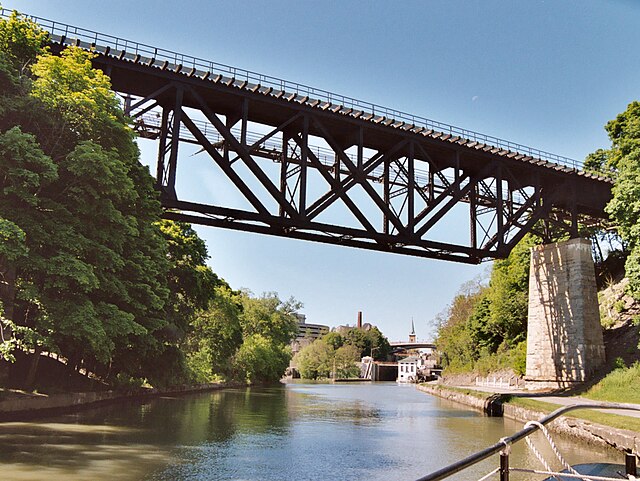A continuous truss bridge is a truss bridge that extends without hinges or joints across three or more supports. A continuous truss bridge may use less material than a series of simple trusses because a continuous truss distributes live loads across all the spans; in a series of simple trusses, each truss must be capable of supporting the entire load.
The Astoria–Megler Bridge is North America's longest continuous truss bridge.
Smaller continuous truss bridge over the Illinois River at Lacon, Illinois
The Kingston-Rhinecliff Bridge
The Sciotoville Bridge (1916), the first continuous truss bridge in the United States.
A truss bridge is a bridge whose load-bearing superstructure is composed of a truss, a structure of connected elements, usually forming triangular units. The connected elements, typically straight, may be stressed from tension, compression, or sometimes both in response to dynamic loads. There are several types of truss bridges, including some with simple designs that were among the first bridges designed in the 19th and early 20th centuries. A truss bridge is economical to construct primarily because it uses materials efficiently.
A truss bridge operated by Southern Pacific Railroad in Contra Costa County, California converted to pedestrian use and pipeline support
Pratt through truss of the former Seaboard Air Line Railway, located near Willow, Florida; abandoned since the mid-1980s
Deck truss railroad bridge over the Erie Canal in Lockport, New York
The four span through truss General Hertzog Bridge over the Orange River at Aliwal North carries vehicular traffic








